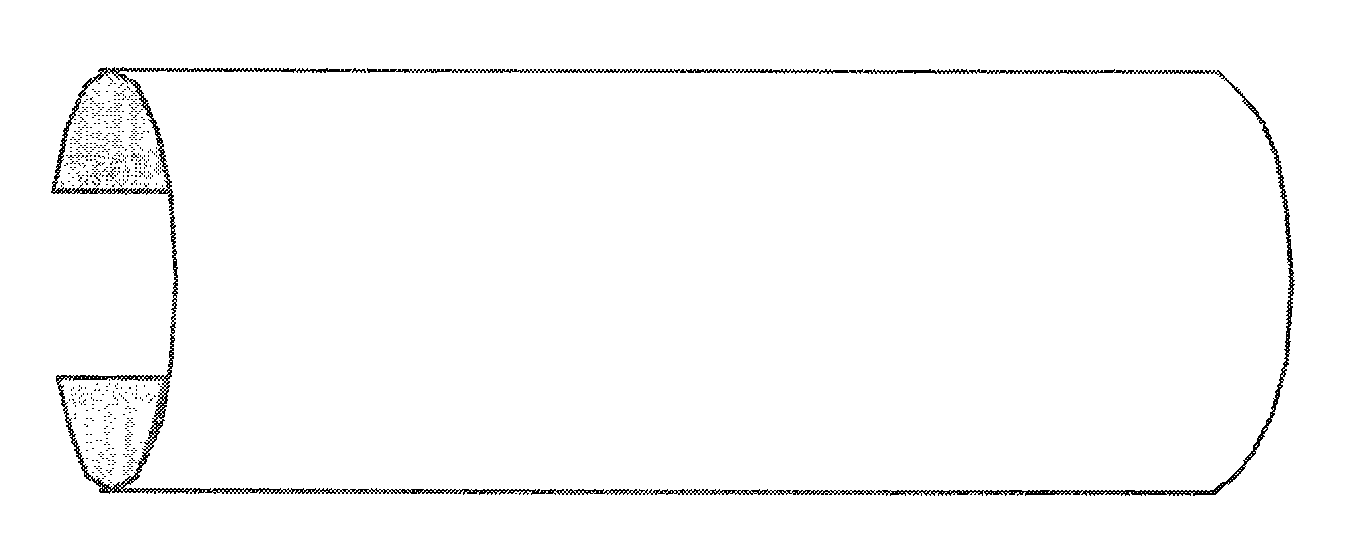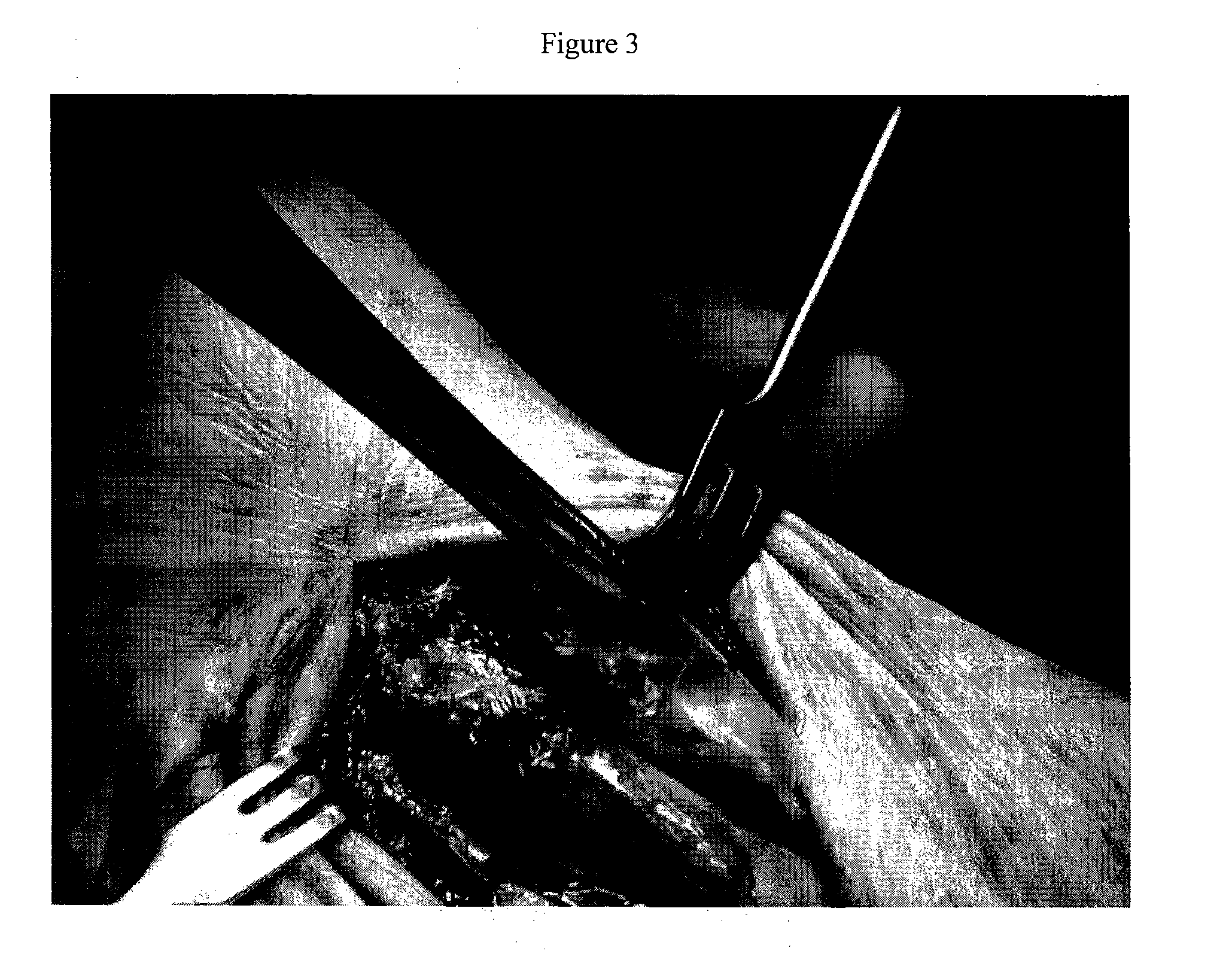Method of tendon repair with amnion and chorion constructs
a technology which is applied in the field of amnion and chorion constructs for tendon repair, can solve the problems of poor spontaneous regenerative capacity of tendons, bone healing, and typical time-consuming
- Summary
- Abstract
- Description
- Claims
- Application Information
AI Technical Summary
Benefits of technology
Problems solved by technology
Method used
Image
Examples
example 1
[0080]This example illustrates a surgical procedure for the application and wrapping of a tendon with a construct of the present invention.
[0081]The application of the allograft construct commences upon completion of repair to the tendon. Repair to the tendon and its structures can include, but are not limited to, synovectomy, tendon tubularization, debridement of the tendon, retinacula repair, sheath repair or end-to-end anastomosis. The cylindrical allograft construct is typically about 8 mm to 10 mm in diameter and has a length of about 60 mm.
[0082]The tendon, being exposed, is now ready for the application of the construct. The sheath is either opened temporarily by the use sutures or with skin hooks. The sutures are placed adjacent to the tendon repair site, on opposing sides of the tendon and another set of sutures proximal to the first set of sutures. Alternatively, this can also be accomplished by an assistant holding the sheath open with skin hooks. The tendon is gently lif...
example 2
[0083]This example illustrates the application of an allograft construct according to an embodiment of the present invention during surgical treatment of posterior tibial tendon dysfunction (PTTD).
[0084]The patient was a 47-year-old woman who presented with a complaint of tenderness in the medial aspect of her right ankle which also occasionally radiated distally into her foot for a period of 6 months. The patient indicated that the pain increased during ambulation and prolonged periods of activity. According to the patient, the pain was not related to any trauma to the foot. The patient noted that she had experienced a progressive flattening of her arch over the past few months. Self-prescribed acetaminophen and ibuprofen did not provide pain relief The patient's medical history revealed hypertension treated with a beta blocker, no previous surgeries and no known drug allergies.
[0085]Upon physical exam the patient had considerable tenderness along the course of the posterior tibial...
example 3
[0093]This example illustrates the application of an allograft construct according to an embodiment of the present invention during surgical treatment of chronic total tendo-Achilles rupture.
[0094]The patient was a 55-year-old man who presented with a five-month history of posterior superior right heel pain. The patient noticed occasional sharp shooting pain in his right heel that began as remitting but eventually progressed to constant tenderness approximately 3-4 weeks after the onset of initial symptoms. Irritating pain, swelling, and tenderness were present with both ambulation and non-weight bearing, but were aggravated with activity. The patient denied any precipitating activity or history of trauma to the area. Self treatment consisted of anti-inflammatory medication.
[0095]Upon examination, the patient's tendo-Achilles was indurated and swollen with an increase in the diameter of the right ankle as compared to the left. The patient experienced pain upon palpation of the poste...
PUM
 Login to View More
Login to View More Abstract
Description
Claims
Application Information
 Login to View More
Login to View More - R&D
- Intellectual Property
- Life Sciences
- Materials
- Tech Scout
- Unparalleled Data Quality
- Higher Quality Content
- 60% Fewer Hallucinations
Browse by: Latest US Patents, China's latest patents, Technical Efficacy Thesaurus, Application Domain, Technology Topic, Popular Technical Reports.
© 2025 PatSnap. All rights reserved.Legal|Privacy policy|Modern Slavery Act Transparency Statement|Sitemap|About US| Contact US: help@patsnap.com



